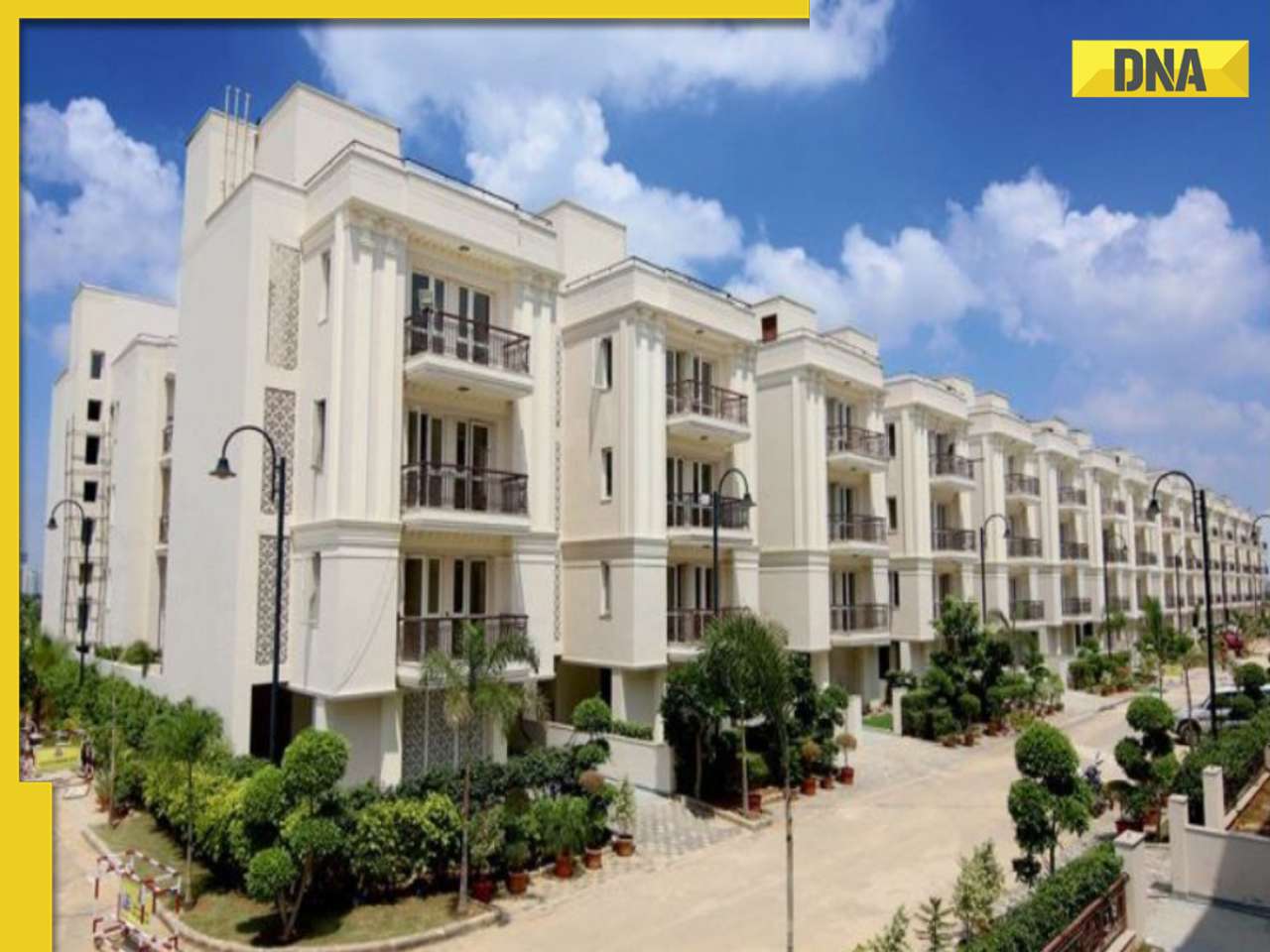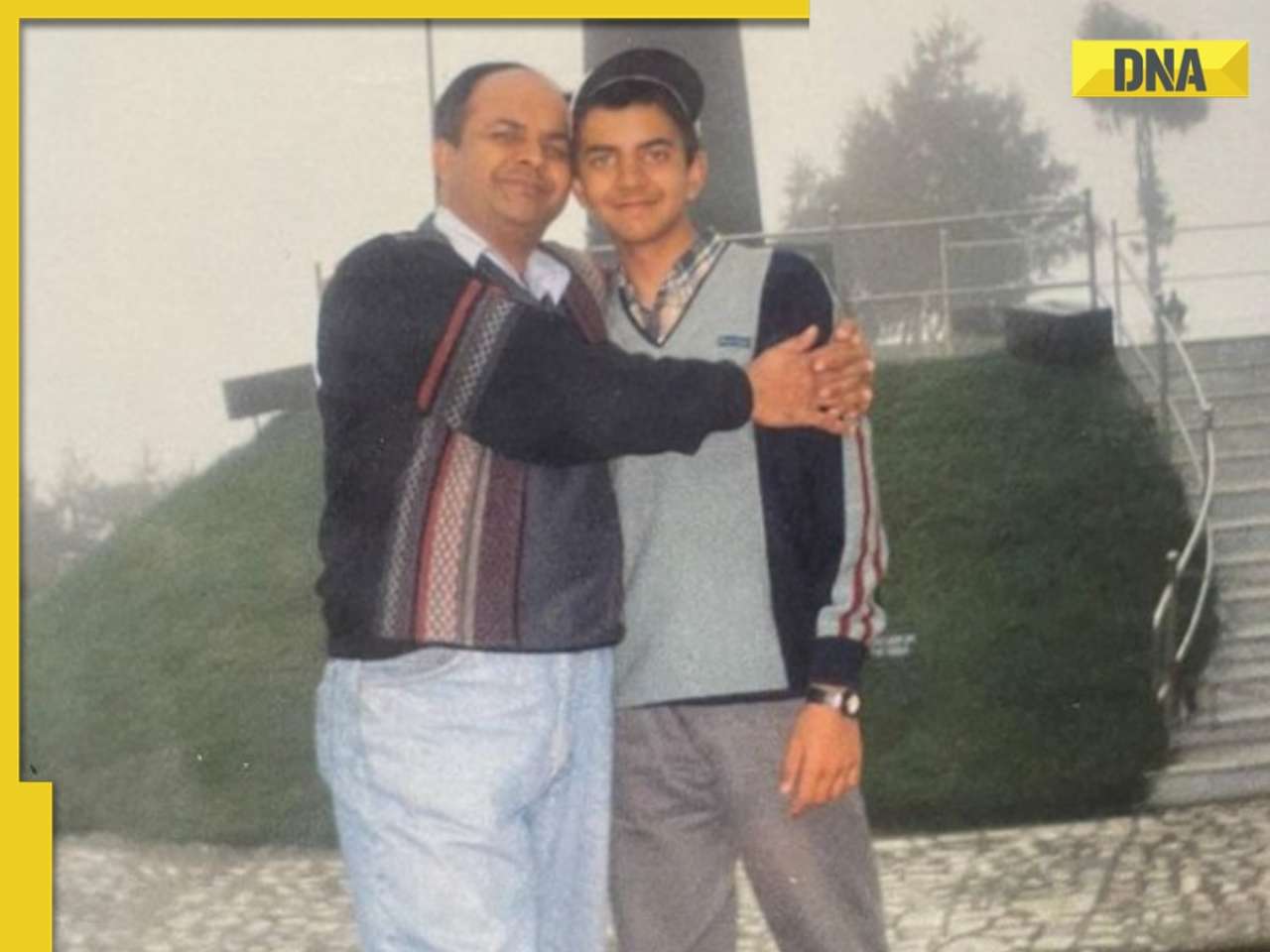Among core businesses, Camlin’s colour business will get a boost given that in January 2007, colour products were de-reserved from the list of small scale industries.
Insight
The move by Indian Hotels Company Ltd (IHCL), the country’s largest chain of hotels, proposing two separate rights offers to existing shareholders to collectively raise Rs 1,924 crore, has dampened sentiment at the counter as expected. While the markets don’t seem happy, an equity dilution was nonetheless around the corner.
IHCL’s plans to increase room capacity by 60% to 16,326 by 2010 are expected to cost over Rs 2,000 crore. This means its consolidated debt-to-equity ratio, which stood at 1.10:1 post the $58 million acquisition of San Francisco based-Campton Place in Q1, would only go up further as IHCL borrows more to build new capacity.
Given that IHCL’s debt-equity ratio has risen consistently (from 0.79:1 in 2005-06), the two rights offers don’t surprise. It also indicates IHCL’s desire to keep debt levels low as well as its desire to increase flexibility to leverage its balance sheet further (probably for acquisitions abroad).
While the first offer to raise Rs 844 crore (1 share for every 5 shares at Rs 70 each) looks appealing, the second offer to raise Rs 900-1,080 crore (one unsecured convertible debenture for every ten shares, convertible between Rs 150 and Rs 180 each) is aggressively priced and would also earn a paltry interest of 4% till the debentures are converted into equity.
Hence, the latter may not receive a good response from all shareholders, and probably give an opportunity to the promoters for raising their stake from 29.17% as on June 30, 2007 to keep predators at bay.
Notably, in the interim, the two offers aren’t expected to help much in terms of lowering the debt-equity ratio. Also, with the first offer, viz. a 20% dilution in equity, the growth in earnings per share (EPS) will also be restricted. Little wonder analysts expect EPS to grow by 12% in 2007-08, far lower than seen in the last few years.
Thereafter, EPS growth is expected to rise to over 20%, assuming the macro environment for the industry remains good. Interestingly, by the time the convertible debentures turn due for conversion, IHCL would have generated cash equivalent to over Rs 1,200 crore from its operations, just enough to repay the debenture holders in the event they decide to not convert into equity.
In either case, taking into account IHCL’s plans, the debt-to-equity ratio should slip to below 0.60:1 by then, which provides comfort in the light of expectations that the industry will see a good increase in room supplies from 2008-09.
Meanwhile, for IHCL, 10% of over 6,400 new rooms planned will be commissioned in 2007 and another 1,156 in 2008. This should help sustain healthy growth, even if room rents remain stable.
The stock, which has underperformed the Sensex since April 2007 (partly due to firm rupee), has fallen 13.6% post the announcement of rights offers, as against the 5.12% fall in the Sensex, indicating the market has factored in the two offers. At Rs 118.80, the stock trades at a PE of 16.6 times its estimated fully-diluted EPS for 2008-09, and can be considered on the declines with a long-term perspective.
Small’s striking
Camlin and Camel, synonymous with office and school stationary and art, are two brands owned by Camlin Ltd, which not far back demerged its fine chemicals business (effective July 2006) by allotting one share each of Camlin and Camlin Fine Chemicals. This restructuring was aimed at enabling the management to focus on independent businesses and unlock value for shareholders. But, did it really unlock value for shareholders?
A day prior to the demerger (February 8, 2007), Camlin traded at Rs 202.90, while on August 23 the combined value (Camlin & Camlin Fine) was at Rs 192, a decline of 5.37% against Sensex’s 3.33% fall. This is not bad, given the huge falls in share prices of many firms.
Among core businesses, Camlin’s colour business will get a boost given that in January 2007, colour products were de-reserved from the list of small scale industries. De-reservation allows Camlin to expand its business and provides more opportunities, which were not possible earlier as reservation posed certain limitations on investments.
Taking advantage of this, Camlin has planned investments for modernising the plant and increasing existing capacities to cater to the rising demand, helped by the increased spending and higher allocation to education by the government. In line with the plans, Camlin is setting up a unit for colours in Jammu, which is likely to be operational from 2008-09. In the pencils business too, Camlin is expanding its polymer-lead and mechanical (push) pencil capacity.
Camlin also plans to foray into markers and expand into markets like Russia, among others. To fund these plans, it is raising Rs 21 crore by placing 12 lakh shares (Rs 175 each) with foreign investors, which will see the equity capital rise by 25% to Rs 6 crore. The expansions plans are expected to bring about a 20% increase in revenues, consistently, for the next three years.
Its financial performance for Q1 (ended June), wherein revenues dropped 10.3% and operating profits by 20.6%, are not comparable consequent to the merger.
Considering the fine chemicals business has accounted for 20-22% of revenues and 50% of profits in the last four years (till 2005-06), assuming a similar break up should give an indication — comparable revenues seem to be up 14% and operating profits by 58.8%. After provision of Rs 42 lakh towards VRS compensation, the net profit works out to Rs 2.27 crore. At Rs 145, a PE of 9.55 times its annualised fully diluted EPS of Rs 15.19 for 2007-08, this small-sized company looks good.
![submenu-img]() Anant Raj Ventures into tier 2 and tier 3 cities, pioneering growth in India’s real estate sector
Anant Raj Ventures into tier 2 and tier 3 cities, pioneering growth in India’s real estate sector![submenu-img]() Sophie Turner reveals she wanted to terminate her first pregnancy with Joe Jonas: 'Didn't know if I wanted...'
Sophie Turner reveals she wanted to terminate her first pregnancy with Joe Jonas: 'Didn't know if I wanted...'![submenu-img]() Meet outsider who was given no money for first film, battled depression, now charges Rs 20 crore per film
Meet outsider who was given no money for first film, battled depression, now charges Rs 20 crore per film![submenu-img]() This is owner of most land in India, owns land in every state, total value is Rs...
This is owner of most land in India, owns land in every state, total value is Rs...![submenu-img]() Meet man who built Rs 39832 crore company after quitting high-paying job, his net worth is..
Meet man who built Rs 39832 crore company after quitting high-paying job, his net worth is..![submenu-img]() Meet woman who first worked at TCS, then left SBI job, cracked UPSC exam with AIR...
Meet woman who first worked at TCS, then left SBI job, cracked UPSC exam with AIR...![submenu-img]() Meet engineer, IIT grad who left lucrative job to crack UPSC in 1st attempt, became IAS, married to an IAS, got AIR...
Meet engineer, IIT grad who left lucrative job to crack UPSC in 1st attempt, became IAS, married to an IAS, got AIR...![submenu-img]() Meet Indian woman who after completing engineering directly got job at Amazon, then Google, Microsoft by using just...
Meet Indian woman who after completing engineering directly got job at Amazon, then Google, Microsoft by using just...![submenu-img]() Meet man who is 47, aspires to crack UPSC, has taken 73 Prelims, 43 Mains, Vikas Divyakirti is his...
Meet man who is 47, aspires to crack UPSC, has taken 73 Prelims, 43 Mains, Vikas Divyakirti is his...![submenu-img]() IIT graduate gets job with Rs 100 crore salary package, fired within a year, he is now working as…
IIT graduate gets job with Rs 100 crore salary package, fired within a year, he is now working as…![submenu-img]() DNA Verified: Is CAA an anti-Muslim law? Centre terms news report as 'misleading'
DNA Verified: Is CAA an anti-Muslim law? Centre terms news report as 'misleading'![submenu-img]() DNA Verified: Lok Sabha Elections 2024 to be held on April 19? Know truth behind viral message
DNA Verified: Lok Sabha Elections 2024 to be held on April 19? Know truth behind viral message![submenu-img]() DNA Verified: Modi govt giving students free laptops under 'One Student One Laptop' scheme? Know truth here
DNA Verified: Modi govt giving students free laptops under 'One Student One Laptop' scheme? Know truth here![submenu-img]() DNA Verified: Shah Rukh Khan denies reports of his role in release of India's naval officers from Qatar
DNA Verified: Shah Rukh Khan denies reports of his role in release of India's naval officers from Qatar![submenu-img]() DNA Verified: Is govt providing Rs 1.6 lakh benefit to girls under PM Ladli Laxmi Yojana? Know truth
DNA Verified: Is govt providing Rs 1.6 lakh benefit to girls under PM Ladli Laxmi Yojana? Know truth![submenu-img]() In pics: Taarak Mehta Ka Ooltah Chashmah actress Deepti Sadhwani dazzles in orange at Cannes debut, sets new record
In pics: Taarak Mehta Ka Ooltah Chashmah actress Deepti Sadhwani dazzles in orange at Cannes debut, sets new record![submenu-img]() Ananya Panday stuns in unseen bikini pictures in first post amid breakup reports, fans call it 'Aditya Roy Kapur's loss'
Ananya Panday stuns in unseen bikini pictures in first post amid breakup reports, fans call it 'Aditya Roy Kapur's loss'![submenu-img]() Remember Harsh Lunia? Just Mohabbat child star, here's how former actor looks now, his wife is Bollywood's popular...
Remember Harsh Lunia? Just Mohabbat child star, here's how former actor looks now, his wife is Bollywood's popular...![submenu-img]() Mother's Day 2024: Bollywood supermoms who balance motherhood, acting, and run multi-crore businesses
Mother's Day 2024: Bollywood supermoms who balance motherhood, acting, and run multi-crore businesses![submenu-img]() Rocky Aur Rani's Golu aka Anjali Anand shocks fans with drastic weight loss without gym, says fitness secret is...
Rocky Aur Rani's Golu aka Anjali Anand shocks fans with drastic weight loss without gym, says fitness secret is...![submenu-img]() Haryana Political Crisis: Will 3 independent MLAs support withdrawal impact the present Nayab Saini led-BJP government?
Haryana Political Crisis: Will 3 independent MLAs support withdrawal impact the present Nayab Saini led-BJP government?![submenu-img]() DNA Explainer: Why Harvey Weinstein's rape conviction was overturned, will beleaguered Hollywood mogul get out of jail?
DNA Explainer: Why Harvey Weinstein's rape conviction was overturned, will beleaguered Hollywood mogul get out of jail?![submenu-img]() What is inheritance tax?
What is inheritance tax?![submenu-img]() DNA Explainer: What is cloud seeding which is blamed for wreaking havoc in Dubai?
DNA Explainer: What is cloud seeding which is blamed for wreaking havoc in Dubai?![submenu-img]() DNA Explainer: What is Israel's Arrow-3 defence system used to intercept Iran's missile attack?
DNA Explainer: What is Israel's Arrow-3 defence system used to intercept Iran's missile attack?![submenu-img]() Sophie Turner reveals she wanted to terminate her first pregnancy with Joe Jonas: 'Didn't know if I wanted...'
Sophie Turner reveals she wanted to terminate her first pregnancy with Joe Jonas: 'Didn't know if I wanted...'![submenu-img]() Meet outsider who was given no money for first film, battled depression, now charges Rs 20 crore per film
Meet outsider who was given no money for first film, battled depression, now charges Rs 20 crore per film![submenu-img]() Meet actress who quit high-paying job for films, director replaced her with star kid, had no money, now lives in...
Meet actress who quit high-paying job for films, director replaced her with star kid, had no money, now lives in...![submenu-img]() This star kid's last 3 films lost Rs 5000000000 at box office, has no solo hit in 5 years, now has lost four films to...
This star kid's last 3 films lost Rs 5000000000 at box office, has no solo hit in 5 years, now has lost four films to...![submenu-img]() Meet actress viral for just walking on screen, belongs to royal family, has no solo hit in 15 years, but still is…
Meet actress viral for just walking on screen, belongs to royal family, has no solo hit in 15 years, but still is…![submenu-img]() This is owner of most land in India, owns land in every state, total value is Rs...
This is owner of most land in India, owns land in every state, total value is Rs...![submenu-img]() Blinkit now gives free dhaniya with veggie orders, thanks to Mumbai mom
Blinkit now gives free dhaniya with veggie orders, thanks to Mumbai mom![submenu-img]() Meet man, an Indian who entered NASA's Hall of Fame by hacking, earlier worked on Apple's...
Meet man, an Indian who entered NASA's Hall of Fame by hacking, earlier worked on Apple's...![submenu-img]() 14 majestic lions cross highway in Gujarat's Amreli, video goes viral
14 majestic lions cross highway in Gujarat's Amreli, video goes viral![submenu-img]() Here's why Isha Ambani was not present during Met Gala 2024 red carpet
Here's why Isha Ambani was not present during Met Gala 2024 red carpet























































)
)
)
)
)
)